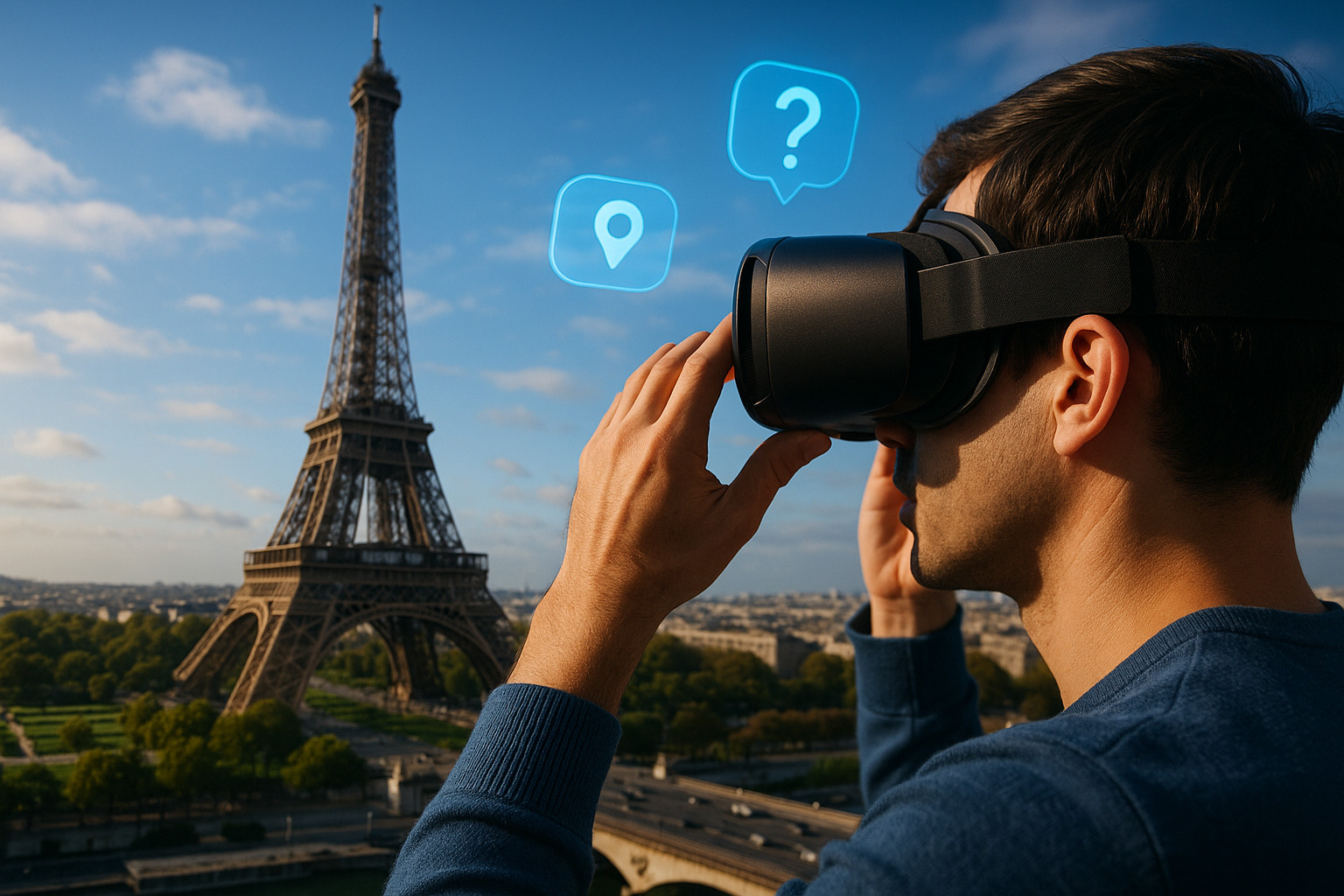Immersive Tourism: How Virtual Reality (VR) and Augmented Reality (AR) Are Revolutionizing Travel
Discover how immersive tourism through virtual reality (VR) and augmented reality (AR) is transforming travel experiences worldwide.
Introduction: The Dawn of Immersive Tourism
Imagine standing atop the Eiffel Tower, feeling the breeze and gazing over Paris, all without leaving your living room. This is the promise of immersive tourism, where virtual reality (VR) and augmented reality (AR) technologies transport travelers to destinations across the globe in unprecedented ways.
Immersive tourism leverages VR and AR to create engaging, interactive experiences that redefine how we explore the world. As these technologies evolve, they offer new avenues for cultural exchange, education, and adventure, making travel more accessible and personalized than ever before.
Understanding VR and AR in the Context of Tourism
Virtual Reality (VR)
VR creates a fully digital environment that users can explore using headsets or other devices. In tourism, VR can simulate destinations, allowing users to experience locations in 360 degrees, complete with sights and sounds, without physically being there.
Augmented Reality (AR)
AR overlays digital information onto the real world, enhancing the physical environment with interactive elements. Tourists can use AR through smartphones or AR glasses to access information about landmarks, navigate cities, or engage with interactive exhibits.
The Rise of Immersive Tourism
The integration of VR and AR into tourism is not just a novelty; it’s a response to evolving traveler expectations and technological advancements. The global virtual tourism market was valued at approximately $728.6 million in 2023 and is projected to grow at a compound annual growth rate (CAGR) of 26.4% between 2024 and 2032 .
This growth is driven by several factors:
- Accessibility: VR and AR make it possible for individuals with physical limitations or financial constraints to experience travel.
- Sustainability: Reducing the need for physical travel can lower carbon footprints and alleviate overtourism in sensitive areas.
- Education: Immersive technologies provide educational opportunities, allowing users to learn about history, culture, and geography interactively.
Real-World Applications of VR and AR in Tourism
Virtual Reality Experiences
- Historical Site Reconstructions: Visitors can explore ancient civilizations through VR reconstructions, such as walking through the streets of ancient Rome or experiencing the Titanic’s voyage .
- Destination Previews: Travel agencies offer VR previews of destinations, helping travelers choose their next vacation spot by experiencing it virtually first.
- Cultural Immersion: Users can participate in cultural festivals or rituals through VR, gaining a deeper understanding of different traditions.
Augmented Reality Enhancements
- Interactive City Tours: Apps like AR City Tours provide information about landmarks and historical sites as users explore cities, enriching the travel experience .
- Museum Exhibits: Museums incorporate AR to bring exhibits to life, allowing visitors to interact with artifacts and access additional content .
- Language Translation: AR apps can translate signs and menus in real-time, breaking down language barriers for travelers.
Benefits of Immersive Tourism
Enhanced Engagement
Immersive technologies captivate users, making learning and exploration more engaging. This heightened engagement can lead to better retention of information and a more memorable experience.
Personalized Experiences
VR and AR allow for customization, enabling travelers to tailor their experiences to their interests, whether it’s art, history, or adventure.
Economic Opportunities
Destinations can attract virtual tourists, generating revenue through virtual tours and experiences, and potentially converting virtual visits into physical ones.
Challenges and Considerations
Technological Limitations
High-quality VR and AR experiences require advanced hardware and software, which may not be accessible to all users.
Authenticity Concerns
While immersive technologies can replicate environments, they may lack the authenticity and spontaneity of real-world travel.
Data Privacy
The use of personal data in creating personalized experiences raises concerns about privacy and data security.
The Future of Immersive Tourism
As technology continues to advance, the potential for immersive tourism expands. Developments in haptic feedback, AI integration, and more affordable hardware will make VR and AR experiences more realistic and accessible.
The metaverse concept further blurs the lines between physical and virtual travel, offering shared, persistent virtual spaces where users can explore, interact, and even conduct transactions .
Conclusion: Embracing the Virtual Voyage
Immersive tourism through VR and AR is reshaping the travel landscape, offering innovative ways to explore, learn, and connect. While it may not replace traditional travel, it complements it, providing opportunities for those unable to travel and enhancing experiences for those who do.
As we navigate this new frontier, embracing these technologies can lead to more inclusive, sustainable, and enriching travel experiences.
Call to Action: Have you experienced immersive tourism through VR or AR? Share your thoughts and experiences in the comments below, and explore our related articles to learn more about the future of travel.
For such news and updates do check Travellerscheckin-Blogs


0 Comment